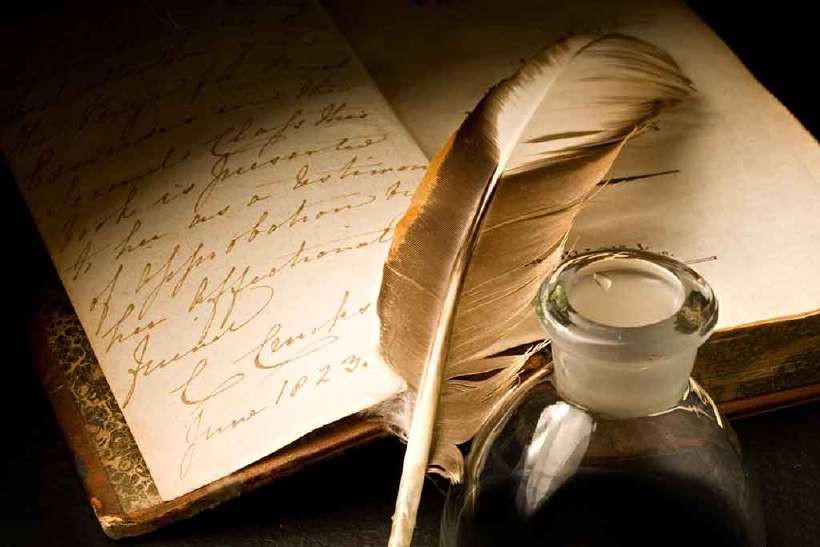The history of writing instruments with which humans have recorded and conveyed thoughts, feelings and grocery lists, is the history of civilisation itself. This is how we know about our ancestors and their lives.
The handy sharpened-stone, used for skinning and killing animals was adapted into the first writing instrument. Around 24,000 BC, the cave man started drawing pictures with the stone onto the walls of his cave dwelling. His drawings showed events in daily life such as the planting of crops or hunting victories. Walls at the Apollo site in Namibia, southwest Africa are believed to be the oldest rock paintings to date.
Before paper came along, people used clay or wax tablets on which they wrote using sharp objects such as metal sticks or bones.
Around 6000 years ago, in 4000 BC, the Egyptians invented the first substance like paper called papyrus. It was a woven mat of reeds, pounded together into a hard, thin sheet. The word ‘paper’ actually comes from the word ‘papyrus’. Ancient Greeks are also known to have used a kind of parchment made from animal skins for the same purpose.

Now something was needed to write upon the parchment or the papyrus. Bones or metal sticks were no longer useful as the papyrus could not be scratched. So the Egyptians created a reed-pen perfect for the papyrus. These were mostly the hollow tubular-stems of marsh grasses, especially from the bamboo plant. And thus, ancient Egyptians converted bamboo stems into a primitive form of a fountain pen. They cut one end into the form of a pen nib or point. A writing fluid or ink filled the stem and the reed forced the fluid to the nib.
Another writing instrument that remained active in history for a long period was the quill pen. Introduced around 1300 years ago in 700 AD, the quill was a pen made from a bird feather. The five outer left wing feathers were plucked from the birds in the spring season. The left wing was chosen because the feathers curved outward and remained away when used by a right-handed writer. Goose feathers were most common, swan feathers were of a high quality, being scarce and most expensive. For making fine line drawings, crow feathers were the best, then came the feathers of the eagle, owl, hawk and turkey.
![Who Invented The Pen? [Illustration by Shinod AP]](/media/5wh-188_1_hu6892b6da6f6334b1c34aade2a09b4612_7444_820x0_resize_q60_box.gif)
Quill pens lasted for only a week before it was necessary to replace them. There were other disadvantages associated with their use, including a lengthy preparation time.
When writers had better inks and paper and handwriting had developed into both an art form and an everyday occurrence, man’s inventive nature once again turned to improving the writing instrument. This led to the development of the modern fountain pen in the 19th century.
473 words |
4 minutes
Readability:
Grade 7 (12-13 year old children)
Based on Flesch–Kincaid readability scores
Filed under: 5ws and h
Tags: #instruments, #bones, #feathers, #fluid, #fountain pen, #history
You may also be interested in these:
Why Do Knuckles Pop?
What Is The Origin Of Silk Fabric?
Do You Know What You are Eating?
Why is the Ball-point Pen Called So?
The Hospitality of a True Blue Nawab